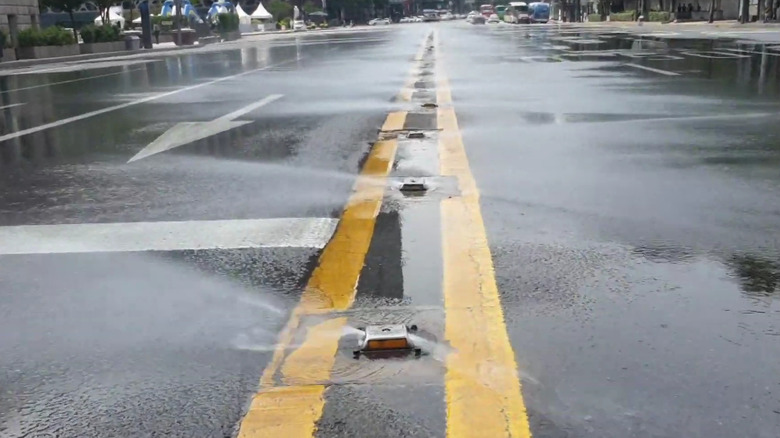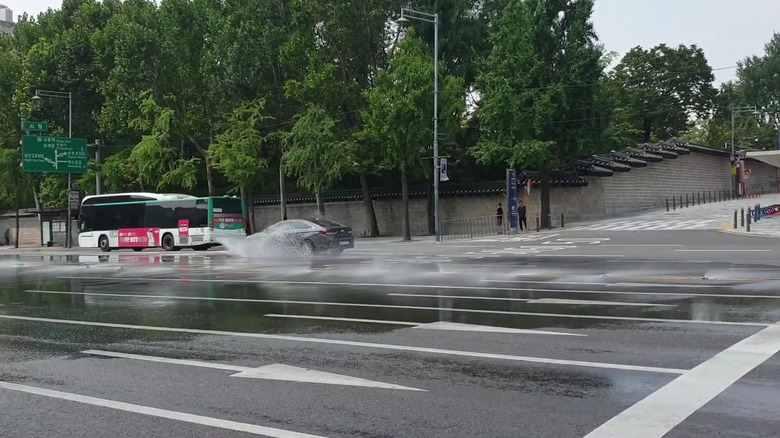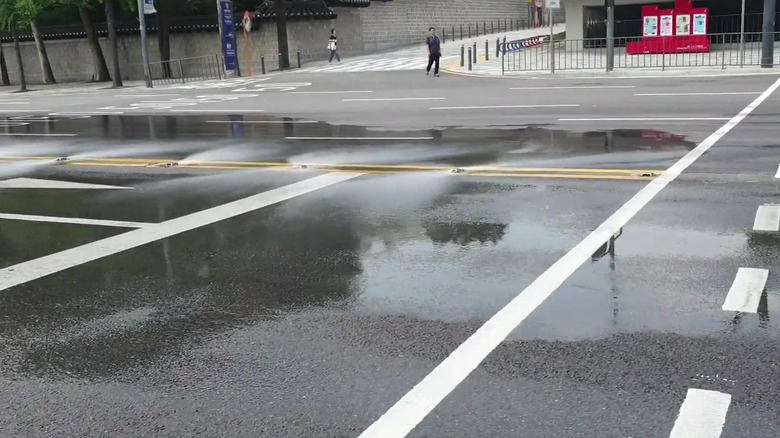The Technology Behind South Korea's Popular Self-Cleaning Streets
South Korea's cities are known for being spotless, and it turns out, they are doing it by making their streets smarter. In several cities like Seoul, Daegu, and other urban areas, the roads can be seen cleaning themselves. And while it might look like random sprinklers simply spraying water on the streets, the system behind it is much smarter than it seems. It was first introduced in 2007 in a small part of Seoul. However, now, it has been expanded to multiple cities and has turned into one of the country's most eye-catching urban innovations.
The entire system starts with a clever twist on something simple — rain. Instead of letting stormwater escape through drains, the roads, sidewalks, and rooftops are engineered to collect it in underground storage tanks. That recycled rainwater is then repurposed for various city needs, including street cleaning, watering green spaces, and even cooling the roads during heatwaves.
The smart streets keeping South Korea clean and cool
The self-cleaning roads rely on built-in sprinkler systems, usually hidden along lane dividers. These sprinklers activate automatically during red lights or at low-traffic hours, sending out gentle sprays that wash away dust, dirt, and harmful tire particles. South Korea's traditional road-washing vehicles also feature advanced tech. Their high-pressure spray nozzles are aimed directly at the road to avoid splashing sidewalks, and some use rotating curtain bars and magnetic shields to prevent water from spilling onto pedestrian areas.
The cooling impact of the self-cleaning street tech is significant. A seven-minute spray session can lower road temperatures by as much as 68 degrees Fahrenheit, and drop the surrounding air temperature by 5 to 7 degrees. That's a big deal in densely populated cities like Seoul and Daegu, where summer asphalt temperatures can reach over 140 degrees. Many municipalities now pair these smart roads with additional cooling elements, like misting shelters, shaded benches, and strategically planted trees, to offer relief for vulnerable residents during heatwaves.
How South Korea is reinventing its roads
Not all the water used comes from rain — it depends on the city. For instance, some cities use filtered river water to keep the streets clean. These smart sprinklers typically run every 90 to 120 minutes, depending on the season, with adjustments made during spring and fall when air quality tends to dip. The advanced system even helps the county manage flooding. And there's talk of adapting the system for winter, using heated water to melt snow, which would be a more environmentally friendly option than using road salt for winter ice.
This year, scientific studies are expected to reveal just how effective these roads really are when it comes to pollution, climate, and public health. But early signs already point to big benefits. Self-cleaning roads are just one part of South Korea's advanced tech. Impressively, bike lanes with solar panels were installed in the middle of the South Korean highway connecting Daejeon and Sejong, demonstrating the country's thoughtful planning.


